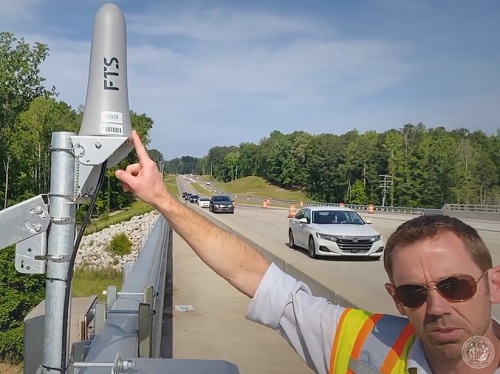Governor Dan McKee (D) recently saluted the Rhode Island Department of Transportation for being the first state agency to fully convert its lighting resources to energy-efficient light-emitting diode or LED lights.
[Above photo by RIDOT]
The LED switchover project – the result of several years of collaboration between the Rhode Island Office of Energy Resources (OER) and RIDOT – includes lighting at 23 RIDOT maintenance facilities and the retrofit of over 9,000 streetlights.
Combined, RIDOT said it should save over $1 million a year on electricity costs and an estimated $14 million over the life of these more efficient lighting systems. They also will save nearly 55,000 metric tons of carbon dioxide emissions.
“I thank RIDOT and OER for their hard work and commitment to conserving energy through this comprehensive conversion to efficient LED technology,” Gov. McKee said in a statement. “In addition to dollars saved, this will contribute to the state’s green energy goals and commitment to meet the goal of the state’s ‘Act on Climate’ while reducing RIDOT’s carbon footprint.”
“This is a journey we have been on for the past several years, first with our streetlights and now with our facilities,” added RIDOT Director Peter Alviti, Jr. “We are proud to lead the way with this energy-saving initiative that will not only save money but reduce our greenhouse gas emissions.”

Gov. McKee noted that OER is spearheading an energy- and emission-reduction effort among state agencies and municipal governments via its “Lead by Example Program.” That program has helped Rhode Island state agencies successfully lower energy consumption by 12.7 percent in 2022 compared to 2014, with 60 percent of state-owned buildings either converted or in the process of converting to LED lighting and 95 percent of state government electricity consumption being offset by renewables.
Other state departments of transportation are deploying LEDs to help reduce energy consumption in different areas.
For example, the Arizona Department of Transportation upgraded the lighting system inside the Interstate 10 Deck Park Tunnel north of downtown Phoenix in March 2021. The agency replaced the “old style” high-pressure sodium lighting system in the Deck Park Tunnel – which originally opened in August 1990 – with 3,200 LED fixtures for a cost of roughly $1.4 million. The agency said the new LED fixtures – expected to last more than twice as long as their sodium predecessors – should result in energy savings worth more than $175,000 per year; savings that, over time, will help pay for the cost of installing the new LED-based tunnel system.




